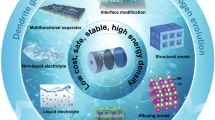Abstract
The electrochemical behaviour of the complexation of cerium(IV) with EDTA and DTPA was studied using both cyclic voltammetry (CV) and rotating disc electrode (RDE). The Ce(IV)–DTPA complex at various scan rates gave a linear correlation between the peak potential (E p ) and square root of scan rate, showing that the kinetics of the overall process was controlled by mass transport. However, when the EDTA ligand was added to the Ce(IV) there was no specific change to the potential peak, i.e. the Ce(IV)–EDTA complex has the same redox potential as the Ce(IV)/(III) couple. Kinetic parameters such as potential, limiting current, diffusion coefficients, transfer coefficient and rate constants were studied. The results from RDE experiments confirmed that the parameters measured by CV are similar under hydrodynamic conditions and can be used to determine the kinetic parameters of the redox couples. The use of DTPA as a ligand for complexation of Ce(IV) gaves more favourable results compared to the Ce–(EDTA) complex reported previously. The results of kinetic studies of Ce(IV)–DTPA complex shows promise as an electrolyte for redox flow battery.



Similar content being viewed by others
References
Rychcik M, Skyllas-Kazacos M (1988) J Power Sources 22:59
Thaller LH (1979) In: NASA TM-79143, National Aeronautics and Space Administration US Department of Energy
NASA TM-79067 (1977) National Aeronautics and Space Administration, US Department of Energy
Liu Y, Xia X, Liu H (2004) J Power Sources 130:299
Reid MA, Thaller LH (1980) NASA Tech Membr 809289:1471
Sum E, Skyllas-Kazacos M (1985) J Power Sources 15:179
Tsuda I, Nozaki K, Sakuta K, Kurokawa K (1997) Sol Energy Mater Sol Cells 47:101
Hasegawa K, Kimura A, Yamamura T, Shiokawa Y (2005) J Phys Chem Solids 66:593
Yamamura T, Watanabe N, Shiokawa Y (2006) J Alloy Comp 408:1260
Skyllas-Kazacos M, Grossmith F (1987) J Electrochem Soc 34:2950
Kazacos M, Skyllas-Kazacos M (1989) J Electrochem Soc 136:2759
Doria J, De Andres MC, Armenta C (1985) Proc 9th Solar Energy Soc 3:1500
Chen YWD, Santhanam KSV, Bard AJ (1981) J Electrochem Soc 128:1460
Fang B, Iwasa S, Wei Y et al (2002) Electrochim Acta 47:3971
Paulenova A, Creager SE (2002) J Power Sources 109:431
Pletcher D, Valder E (1988) Electrochim Acta 33:499
Wei Y, Fang B (2005) J Appl Electrochem 35:561
Abbaspour A, Mehrgardi MA (2005) Talanta 67:579
Glentworth P, Wiseall B, Wright CL et al (1968) J Inorg Nucl Chem 30:967
Kiekens P, Steen L, Donche H et al (1981) Electrochim Acta 26:841
Pletcher D, White JCP (1992) Electrochim Acta 37:575
Rao GN (1970) Indian J Chem 8:328
Bard AJ, Faulkner LR (2001) Electrochemical methods fundamentals and applications, 2nd edn. John Wiley & Sons, New York
Zanello P (2003) Inorganic electrochemistry theory, practice and application. The Royal Society of Chemistry, Cambridge
Murthy ASN, Srivastava T (1989) J Power Sources 27:119
Zang JB, Wang YH, Zhao SZ, Bian LY, Lu J (2007) Diamond Relat Mater 16:16
Cai C, Mirkin MV (2006) J Am Chem Soc 127:171
Acknowledgments
The authors acknowledge financial support by the National Research Foundation (NRF), South Africa and the Tertiary Education Support Program (TESP) of the Electricity Supply Commission (ESKOM), South Africa.
Author information
Authors and Affiliations
Corresponding author
Rights and permissions
About this article
Cite this article
Modiba, P., Crouch, A.M. Electrochemical study of cerium(IV) in the presence of ethylenediaminetetraacetic acid (EDTA) and diethylenetriaminepentaacetate (DTPA) ligands. J Appl Electrochem 38, 1293–1299 (2008). https://doi.org/10.1007/s10800-008-9558-7
Received:
Revised:
Accepted:
Published:
Issue Date:
DOI: https://doi.org/10.1007/s10800-008-9558-7




